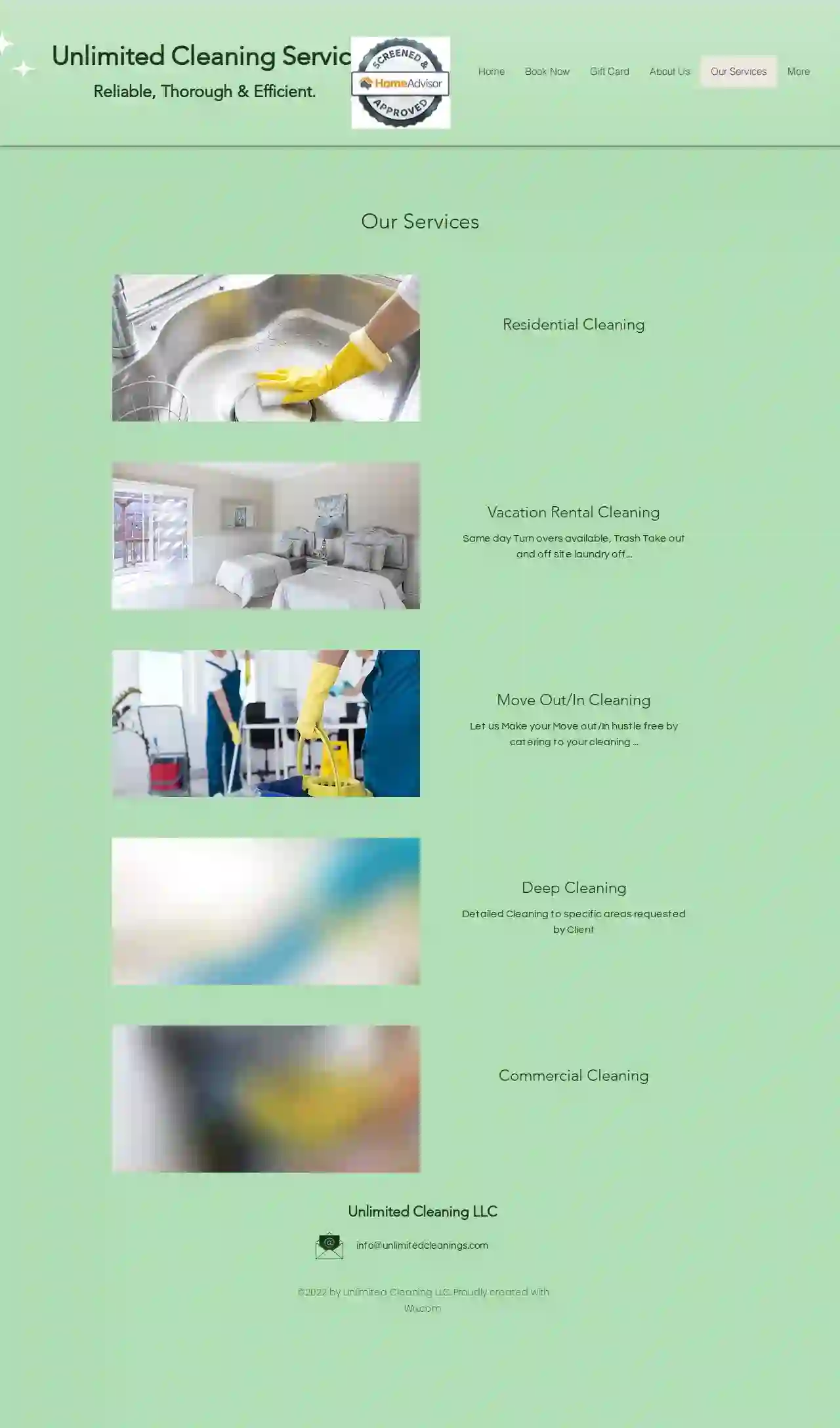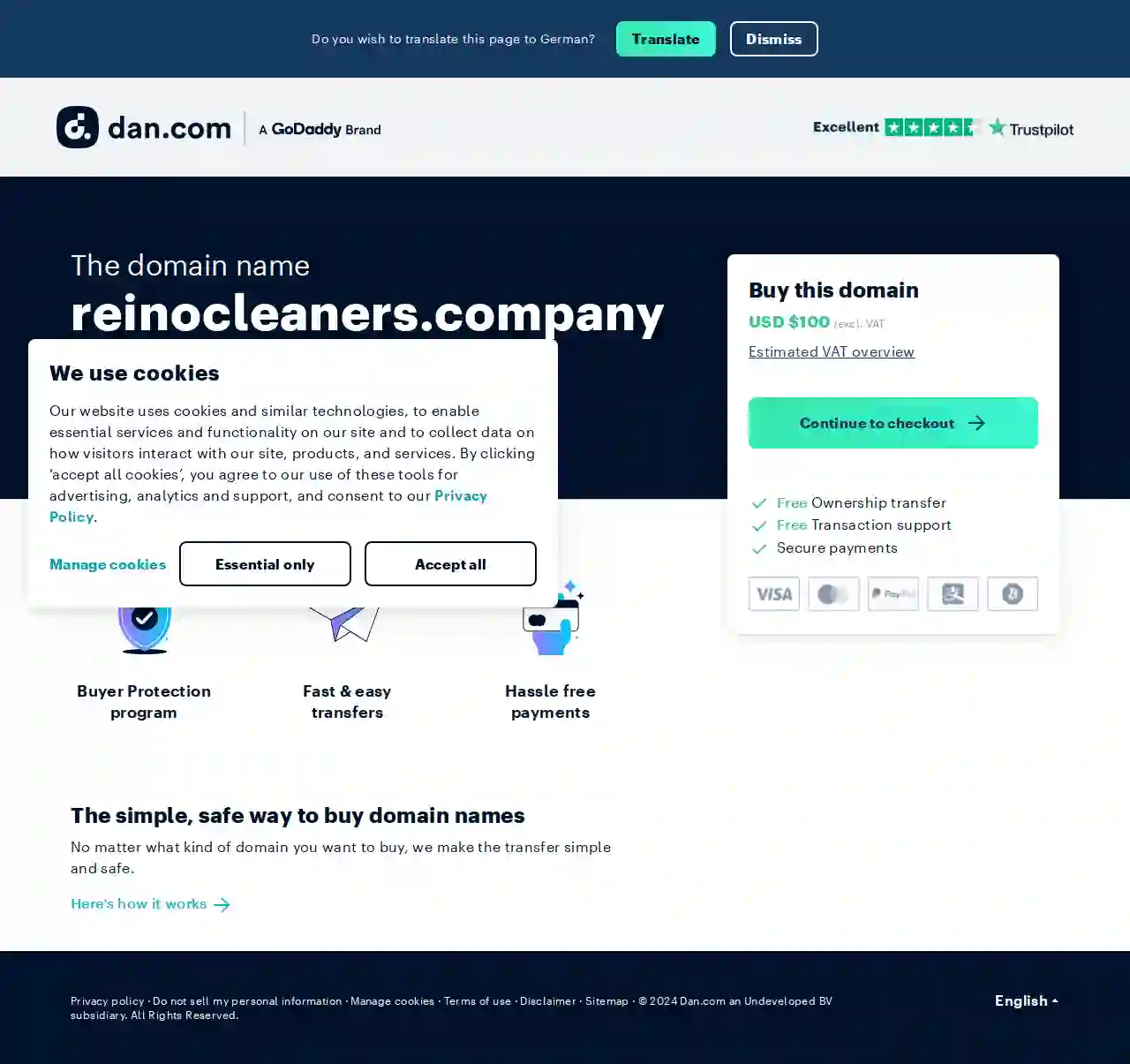Cleaning Services Highlands
Find the best Apartment Cleaning in Highlands
Receive 3 FREE Home Cleaning quotes for your project today! Compare profiles, reviews, accreditations, portfolio, etc... and choose the best service.

Upright Cleaning, LLC - San Antonio, Tx
5107 reviewsSan Antonio, US- Services
- Why Us?
- Gallery
Get Quote
BB'z Housekeeping LLC
5189 reviewsSan Antonio, USBB'z Housekeeping offers high-quality cleaning for San Antonio and surrounding areas. Our core values reflect our focus on integrity and passion for what we do, our desire to build a personal relationship with our clients and help provide a cleaner, safer environment in which to live and work. We are a local, family-owned and operated cleaning service who takes pride in the quality of our work and strive to serve our community with a variety of residential and commercial cleaning service packages to fit every budget. With over 5 years of experience, we are experts at what we do! We are certified in Covid-19 residential and commercial cleaning techniques and procedures. We use CDC approved products.
- Services
- Why Us?
- Accreditations
- Our Team
- Testimonials
- Gallery
Get Quote
System4 San Antonio
4.97 reviewsSan Antonio, US- Services
- Why Us?
- Gallery
Get Quote
Pristine Services Full House Cleaning
54 reviews123 Main St, Anytown, 12345, USAt Pristine Services, we pride ourselves on providing top-notch cleaning and maintenance solutions for homes and businesses in the area. Our team of experts is dedicated to delivering exceptional results, ensuring your space is clean, safe, and healthy. With years of experience and a commitment to customer satisfaction, we're the go-to choice for all your cleaning needs. From one-time deep cleans to regular maintenance, we've got you covered. Contact us today to schedule your appointment and experience the Pristine difference!
- Services
- Why Us?
- Accreditations
- Our Team
- Testimonials
Get Quote
Anago of San Antonio
516 reviews123 Main St, San Antonio, 78259, USAt Anago Cleaning, we pride ourselves on providing top-notch commercial cleaning services to businesses across the nation. With a focus on disinfection, floor care, and janitorial services, our team of experts is dedicated to creating a clean and safe environment for your employees, customers, and clients. From office buildings to medical facilities, we understand the importance of maintaining a high level of cleanliness and hygiene. Our services include electrostatic disinfection, GBAC STAR™ Accredited, and Protection+ Disinfection, ensuring that your business meets the highest standards of cleanliness. With a wide range of services and a commitment to customer satisfaction, Anago Cleaning is the perfect choice for your commercial cleaning needs.
- Services
- Why Us?
- Accreditations
- Our Team
- Testimonials
- Gallery
Get Quote
Mom Needs A Break Cleaning
4.9251 reviewsSan Antonio, US- Services
- Why Us?
- Gallery
Get Quote
Hazel's Cleaning Services
4.977 reviewsDallas, Texas, United States, TX, USHazel's Cleaning Services is a top-rated cleaning service in Dallas, TX, offering a wide range of cleaning solutions including Airbnb Cleaning, Deep Cleaning, Disinfecting, Full-Service Commercial Cleaning, Home Cleaning, Move In/Out Cleaning, and Post-construction Cleaning. With over 15 years of experience and over 1100 happy customers, Hazel's Cleaning Services is dedicated to providing exceptional customer service, quality workmanship, and affordable pricing. Their team of trained and skilled cleaning professionals ensures a stress-free service, supported by their satisfaction guarantee.
- Services
- Why Us?
- Testimonials
- Gallery
Get Quote
UnlimitedCleaning
51 reviewsAmarillo, US- Services
- Why Us?
Get Quote
J&V Janitorial
536 reviewsFort Worth, US- Services
- Why Us?
Get Quote
Reino Cleaners
511 reviewsDallas, US- Services
- Why Us?
Get Quote
Over 60,241+ Cleaning Services on our directory
Our cleaning contractors operate in Highlands & surroundings!
CleaningMatch has curated and vetted the Best Janitorial Services arround Highlands. Find the most reliable contractor today.
Frequently Asked Questions About Cleaning Services
- Blot, don't rub: When treating fresh stains, blot with a clean cloth or paper towel to absorb as much of the stain as possible. Rubbing can spread the stain and damage carpet fibers.
- Club Soda: For spills like wine or coffee, pour club soda on the stain, let it fizz, then blot with a clean cloth. Repeat if needed.
- Vinegar Solution: Mix equal parts white vinegar and water, apply to the stain, and blot. Vinegar helps remove stains and odors.
- Baking Soda Paste: Make a paste with baking soda and water, apply to the stain, let it dry, then vacuum. Baking soda absorbs odors and lifts stains.
- Commercial Carpet Cleaner: : Use a commercial carpet cleaner according to the instructions. Choose a cleaner specifically designed for the type of stain you're dealing with.
- Professional Carpet Cleaning: For stubborn or deeply set stains, consider hiring a professional carpet cleaning service. They have specialized equipment and expertise in stain removal.
- Experience: 'How long have you been in business, and what type of cleaning services do you specialize in?'
- Licensing and Insurance: 'Are you licensed, insured, and bonded? Can I see proof of coverage?'
- Background Checks: 'Do you conduct background checks on your employees?'
- Cleaning Supplies: 'Do you provide your own cleaning supplies and equipment, or should I provide them?'
- Cleaning Methods: 'What cleaning methods and products do you use?'
- References: 'Can you provide references from previous clients?'
- Scheduling and Availability: 'What days and times are you available for cleaning?'
- Pricing and Payment: 'What is your pricing structure, and what payment methods do you accept?'
- Cancellation Policy: 'What is your cancellation policy?'
- Satisfaction Guarantee: 'Do you offer a satisfaction guarantee? What happens if I'm not happy with the service?'
- Prepare the Windows: Remove dust and debris from windows using a brush, vacuum, or damp cloth.
- Cleaning Solution: Use a commercial glass cleaner or a homemade solution of equal parts water and vinegar.
- Spray and Wipe: Spray the cleaning solution onto the window, ensuring even coverage.
- Squeegee Technique: Use a squeegee to wipe the cleaner from top to bottom, overlapping each stroke by about an inch. Wipe the squeegee blade clean after each stroke.
- Dry Edges: Wipe the edges of the window with a clean, dry microfiber cloth to remove any remaining moisture.
- Using the wrong cleaning products: Certain cleaning products are unsuitable for specific surfaces. Using abrasive cleaners on delicate surfaces can cause scratches or discoloration.
- Not reading product instructions: Always read and follow the instructions on cleaning products to ensure proper usage and avoid potential hazards.
- Using dirty cleaning tools: Dirty cloths, sponges, and mops can spread germs and dirt instead of cleaning them. Rinse and sanitize your cleaning tools regularly.
- Skipping ventilation: Proper ventilation is essential when using cleaning products, especially those with strong fumes. Open windows and doors to allow fresh air circulation.
- Not allowing sufficient drying time: After cleaning, allow surfaces to dry completely to prevent mold and mildew growth, particularly in humid areas like bathrooms.
- Ignoring clutter: Clutter makes cleaning more difficult and time-consuming. Declutter regularly to maintain a cleaner and more organized home.
How can I get rid of tough stains on carpets?
Always test any cleaning solution on a small, inconspicuous area of the carpet first to ensure it doesn't cause discoloration or damage.
What should I ask a cleaning service before hiring them?
By asking these questions, you can assess their professionalism, reliability, and suitability for your cleaning needs.
What is the best way to clean windows without streaks?
For best results, clean windows on a cloudy day or in the shade to prevent the cleaning solution from drying too quickly and leaving streaks.
What are some common cleaning mistakes to avoid?
By avoiding these common cleaning mistakes, you can improve your cleaning efficiency and achieve better results.
How can I get rid of tough stains on carpets?
- Blot, don't rub: When treating fresh stains, blot with a clean cloth or paper towel to absorb as much of the stain as possible. Rubbing can spread the stain and damage carpet fibers.
- Club Soda: For spills like wine or coffee, pour club soda on the stain, let it fizz, then blot with a clean cloth. Repeat if needed.
- Vinegar Solution: Mix equal parts white vinegar and water, apply to the stain, and blot. Vinegar helps remove stains and odors.
- Baking Soda Paste: Make a paste with baking soda and water, apply to the stain, let it dry, then vacuum. Baking soda absorbs odors and lifts stains.
- Commercial Carpet Cleaner: : Use a commercial carpet cleaner according to the instructions. Choose a cleaner specifically designed for the type of stain you're dealing with.
- Professional Carpet Cleaning: For stubborn or deeply set stains, consider hiring a professional carpet cleaning service. They have specialized equipment and expertise in stain removal.
Always test any cleaning solution on a small, inconspicuous area of the carpet first to ensure it doesn't cause discoloration or damage.
What should I ask a cleaning service before hiring them?
- Experience: 'How long have you been in business, and what type of cleaning services do you specialize in?'
- Licensing and Insurance: 'Are you licensed, insured, and bonded? Can I see proof of coverage?'
- Background Checks: 'Do you conduct background checks on your employees?'
- Cleaning Supplies: 'Do you provide your own cleaning supplies and equipment, or should I provide them?'
- Cleaning Methods: 'What cleaning methods and products do you use?'
- References: 'Can you provide references from previous clients?'
- Scheduling and Availability: 'What days and times are you available for cleaning?'
- Pricing and Payment: 'What is your pricing structure, and what payment methods do you accept?'
- Cancellation Policy: 'What is your cancellation policy?'
- Satisfaction Guarantee: 'Do you offer a satisfaction guarantee? What happens if I'm not happy with the service?'
By asking these questions, you can assess their professionalism, reliability, and suitability for your cleaning needs.
What is the best way to clean windows without streaks?
- Prepare the Windows: Remove dust and debris from windows using a brush, vacuum, or damp cloth.
- Cleaning Solution: Use a commercial glass cleaner or a homemade solution of equal parts water and vinegar.
- Spray and Wipe: Spray the cleaning solution onto the window, ensuring even coverage.
- Squeegee Technique: Use a squeegee to wipe the cleaner from top to bottom, overlapping each stroke by about an inch. Wipe the squeegee blade clean after each stroke.
- Dry Edges: Wipe the edges of the window with a clean, dry microfiber cloth to remove any remaining moisture.
For best results, clean windows on a cloudy day or in the shade to prevent the cleaning solution from drying too quickly and leaving streaks.
What are some common cleaning mistakes to avoid?
- Using the wrong cleaning products: Certain cleaning products are unsuitable for specific surfaces. Using abrasive cleaners on delicate surfaces can cause scratches or discoloration.
- Not reading product instructions: Always read and follow the instructions on cleaning products to ensure proper usage and avoid potential hazards.
- Using dirty cleaning tools: Dirty cloths, sponges, and mops can spread germs and dirt instead of cleaning them. Rinse and sanitize your cleaning tools regularly.
- Skipping ventilation: Proper ventilation is essential when using cleaning products, especially those with strong fumes. Open windows and doors to allow fresh air circulation.
- Not allowing sufficient drying time: After cleaning, allow surfaces to dry completely to prevent mold and mildew growth, particularly in humid areas like bathrooms.
- Ignoring clutter: Clutter makes cleaning more difficult and time-consuming. Declutter regularly to maintain a cleaner and more organized home.
By avoiding these common cleaning mistakes, you can improve your cleaning efficiency and achieve better results.